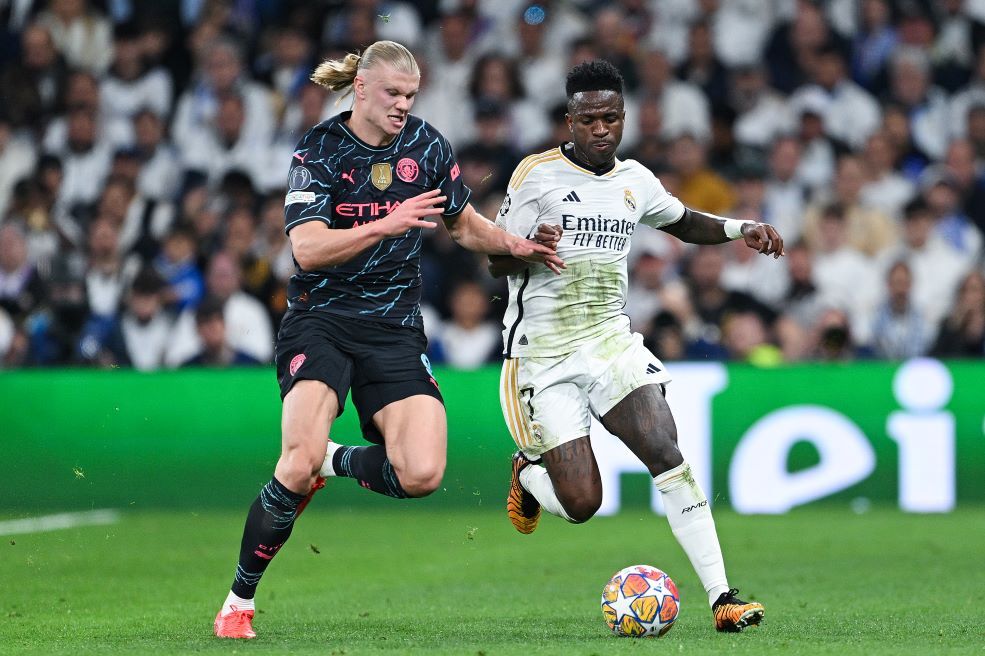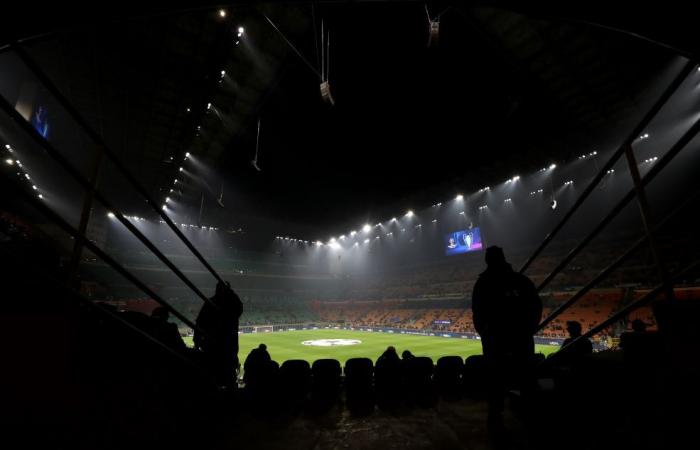Jude Bellingham and Real Madrid players celebrate after eliminating Manchester City in the quarter-finals of the 2023-2024 Champions League (Naomi Baker/Getty Images)
Next year there will be 5 Italian teams in the top European competition, which in total will distribute almost 2.5 billion euros, divided into three items
From the 2024-2025 season the men’s Champions League will change its format and the number of participants will increase from 32 to 36 teams: and thanks to its results in the European cups, next year Serie A will bring five teams instead of four into the main continental competition for club. It is important on a competitive and prestige level, but also economically, because qualifying for the Champions League and then moving forward in the competition brings a lot of money to the teams.
As explained in a UEFA circular released last March, the 36 teams that will play in the Champions League next year will share (not in equal parts) almost two and a half billion euros (2 billion and 467 million, 30 million of which for the European Super Cup), divided into three entries. 27.5 percent (670 million) as a participation fee, 37.5 percent (914 million) based on the results in the competition and the remaining 35 percent (853 million) for an item that brings together the value of the team’s market in the country and its ranking, i.e. the European results of recent years.
(Marco Luzzani/Getty Images)
The participation fee is the same for all clubs, so the 670 million must be divided by 36. This means that each team that qualifies for the Champions League will be entitled to a prize of 18.62 million euros.
As for the results in the competition, there will be prizes for each match, in particular 2.1 million for a win and 700 thousand euros for a draw. Next year the teams will be divided into four groups of 9 (they will therefore play a minimum of eight games), but in the end a single ranking will be formed, from first to 36th place. The top eight in this single group will qualify for the direct elimination phase; the teams that go from ninth to twenty-fourth position, however, will play for qualification in a round-trip playoff. The top eight in the ranking will receive another 2 million euros each, while those from ninth to sixteenth 1 million each.
Furthermore, 666 shares of 275 thousand euros will also be assigned: the number of shares to which each team will be entitled will increase based on the position in which they arrive. The last in the ranking, the 36th, will receive only a share, therefore 275 thousand euros; the first in the ranking will receive 36 shares of 275 thousand euros, therefore 9.9 million euros in total.
Once the first phase has been passed, at each stage the teams will receive new cash prizes, in particular: 1 million euros for each team that qualifies for the playoffs, 11 million for qualifying for the round of 16, 12.5 million for the quarter-finals, 15 million for the semi-finals, 18.5 million euros for each team that reaches the final. Finally, the winner will receive another 6.5 million euros (to which must be added 4 million for qualification for the European Super Cup, which is played between the winner of the Champions League and the winner of the Europa League).

Erling Haaland and Vinícius Júnior: Manchester City and Real Madrid have won the last two editions of the Champions League (David Ramos/Getty Images)
The third item, as mentioned, concerns what is called in English value, i.e. the value of the club, and is a sum of its market value in the relevant country and its results in Europe. Until this year these two items (market pool and historical ranking) were separate, but now they have been combined, and overall they will be worth a little less than before: from around 900 to 853 million, while the money distributed for the results (previously they were worth around 600 million, now 914).
The 853 million of value they are divided among the 36 clubs participating in the Champions League in proportion to the sale of television rights in the UEFA markets (the so-called “European part”) and in the other markets (“non-European part”). The relationship between the European and non-European parties will only be known this summer because it will be based on the contracts stipulated between the clubs and the broadcasters by July 1, 2024. Once the two parties have been established, the money will be allocated, in a complex manner which will differs for the European and non-European parts.
For the European one (which will certainly be the largest) the various countries of the participating teams will be classified based on the contribution that the national broadcasters will give to the overall media revenue for the competition. For example, if England is the country where TV rights are worth the most, it will be ranked first, and so on. At that point, the individual teams of each country will be ranked among themselves based on their qualification for the European competition groups of the last five years (they will obtain 3 points for each Champions League played in the last five years, 2 for each Europa League and 1 for each Conference League).

Leroy Sané of Bayern Munich, one of the four teams qualified for the Champions League semi-finals (Alexander Hassenstein/Getty Images)
For example, if England are first and four teams qualify, they will be ranked first to fourth based on their European participation over the last five years. Assuming then that Italy is in second place in terms of contribution brought by television rights: at that point, the five Italian teams in the Champions League will be classified from fifth to ninth place, and so on for the 36 participating clubs. Inter, who have always qualified for the Champions League in the last 5 years, will obtain 15 points (the maximum) and will therefore be first among the Italians. It didn’t end there, though.
In fact, another ranking of the 36 participating clubs will also be drawn up, this time based on the UEFA ranking of the last five years (not only on participation in European cups, but also on the results obtained in the various competitions). An average will then be taken of the two rankings, that of the television market value and that of the ranking, and a definitive ranking of the 36 clubs will be established. At this point, the total amount of the European part (which, as mentioned, is not yet known) will be divided into 666 shares, and redistributed proportionally based on the ranking. The first team will get 36 shares, the last only 1. Essentially, the more a team belongs to a country where television rights for European cups have value, and the better it has done in European cups in recent years, the more money it will earn from the voice value.
The non-European part, however, does not take into consideration the television rights, but only the ranking, however based on the last ten European seasons, instead of five. Here too there will be a ranking from first to 36th place, with the usual 666 odds divided proportionally. Overall, therefore, the teams from the richest leagues, which have achieved good results in Europe in recent years and which will move forward in the competition next year, will be able to earn figures in excess of 100 million euros by playing in the Champions League, to which will be added many other revenues (tickets, television rights, merchandising).
Continue on the Post
Tags: play Champions League earn Post









